Financial institutions require high security, but with each bank requiring different solutions, how do they find what they need? A&S looks at current user preferences and how solutions are implemented.
Financial institutions require high security, but with each bank requiring different solutions, how do they find what they need? A&S looks at current user preferences and how solutions are implemented.
Security systems keep valuable assets safe and enhance customer service. High-level security not only secures banks, it also creates an important corporate image, said Vincentius Liong, Head of PEC, Building Management Systems and Security Systems, Schneider Electric. Security solution providers must understand the needs and requirements of their customers to provide the best solutions.
For easy management, most banks adopt a standardized system and deploy it at all branches. However, system selection and purchase are often made locally by each branch.
“While larger banks can mandate the same solution be deployed across all their regions of operation, we see more commonly that banks tend to operate autonomously when it comes to equipment selection within each of its international regions,” said Steve Langford, Director of Solutions Marketing, March Networks.
“Therefore, each security group also needs to be approached independently.”
Customized Solutions
Solutions for banks are highly customized. “A ‘one-size' fits all approach typically does not work, in the sense that there are always unique conditions for each site,” said Shiraz Kapadia, COO, Enterprise Access Solutions, L-1 Identity Solutions. “Requirements for devices used for outdoors, very high-security locations or even in high-throughput locations are very different. It is critical to the success of the project that the correct solution components are matched with the requirements.”
Different banks have their own requirements. The key is to cater solutions to respond to those requirements and needs.
However, banks share some common features. A solution chosen for a network of bank branches should meet the varying requirements of each branch, Kapadia said. This depends on the type of assets and level of security required to protect them from theft and fraud — both internally and externally. L-1 incorporates finger vein, fingerprint and 3-D face recognition for multimodal access control.
Cost-Effectiveness
Users need high-level security, but must spend frugally. “Many banks are faced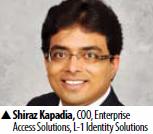 with budget constraints while still needing to keep their banks secure,” said Randy Krzak, VP of Marketing and Sales Operations, Chubb Edwards (a UTC Fire & Security company). “UTCFS strives to continuously improve our security technologies while still providing a cost-effective solution to our clients.”
with budget constraints while still needing to keep their banks secure,” said Randy Krzak, VP of Marketing and Sales Operations, Chubb Edwards (a UTC Fire & Security company). “UTCFS strives to continuously improve our security technologies while still providing a cost-effective solution to our clients.”
“One way to save customers money is by developing new technologies that will integrate with existing security equipment in a cost-effective way,” Krzak said. “Remote video monitoring also reduces the expense of guards.”
While price is a concern, banks cannot afford poor image quality. “In many countries, such as in Indonesia,the government rules require all banks to have cameras but do not specify the type of cameras to be used,” said Oh Tee Lee, Regional Director for South Asia Pacific, Axis Communications. “As a result, many banks deployed the cheapest cameras. Nowadays, as bank security personnel started to realize the benefits and importance of quality systems, the image quality has become more important than price.”
Technology Acc eptance
Not all banks accept cutting-edge technology. While they are relatively early adopters of new technology, product developments require financial institutions to update how they deploy security.
Most security managers for banks have a background in traditional analog systems. “However, in recent months, the bank took a different approach to system requirements, as the security team and IT department merged together and reported to the CIO/CSO,” Koh said. “With the new team in place, they are exploring all opportunities to upgrade their systems to IP-based or hybrid solutions.”
Emerging markets with less legacy equipment are embracing new solutions. “Banks in China, Southeast Asia and the Middle East are not conservative,” said Sri Hartati Kurniawan, CTO of RCG. “They are always looking for the latest, cutting-edge technologies to safeguard the banking environment in all aspects.”
In Vietnam and the Philippines, more banks are increasing security to meet official mandates. “Four major banks in the Philippines are going through the upgrade process this year,” Koh said. Biometrics has witnessed increased
adoption for secure identity. “Some of our most forward thinking customers actually come from the bank industry,” said Kapadia. “One of our customers has deployed a system worldwide utilizing 3-D face recognition and iris technology to secure almost every employee access location, from main employee entrances to the most secured and protected locations.”
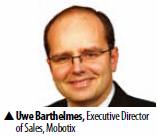 Networked Security
Networked Security
More banks offer online commerce options, adding another technical facet to security. IT infrastructure is seen as a part of many banks' core business or at least one strategic backbone to their core business. Security has transitioned to an IT-based industry over the past years and more of that principle is adopted by customers from all industries.Banks are being seen more at the forefront. Network bandwidth has become a major issue. “Prior to selecting systems, users need to review its bandwidth availability,” Lee said.
“Depending on the infrastructure resources one has, users could choose multistreaming network systems to allow different frame rates of transmission within or outside a branch's network, for installations where the bandwidth is limited.”
More fiber optic broadband networks are implemented for banks in prime locations. “Network transmission is made more reliable with the new network infrastructure. Within the banks, they are upgrading and increasing the internal network infrastructure with fiber optic,” said Liong. “However, this is not applicable for all bank branches, especially in small towns and remote areas.”
Some banks have their own VPN, particularly in the Middle East. “Through VPN, their branches in all parts of the region can be linked with their headquarters, enabling centralization,” Kurniawan said.
Network security is another factor to consider. “Currently, major banks are using a high-profile network security architecture with a highly skilled IT team to manage operations,” said Kurniawan. 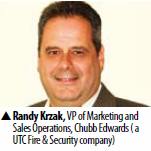
Rules and Regulations
Rules and regulations vary by ountry and it plays an important role in bank security. Every bank accounts for common factors, which are incorporated into its everyday operational policy.
In Germany, the BGV regulations govern safety at work. “The BGV C 9 is the safety regulation for the banking sector, and our cameras and software meet all BGV C 9 requirements,” said Uwe Barthelmes, xecutive Director of Sales, Mobotix. “Installation is easy. Beyond the cameras and software, only inexpensive standard IT components are required for installation.”
Products must comply with regulations, such as offering different levels of authorization. “They need to be customizable to suit the client's needs,” Kurniawan said.
Government regulations drive the adoption of video surveillance. “For Vietnam and the Philippines, the local security advisory required all the banks to have their branch offices equipped with surveillance systems and at least one security personnel,” said Raymond Koh, Regional Sales Manager for Southeast Asia, Axis Communications. “The main criteria was set for the placement of cameras, include the entrance, exit, ATMs and the bank teller counters. The rest of the locations within the bank branch are subject to the individual bank's discretion.”
Consultants help financial institutions comply with government requirements. Security teams must consider all aspects of safety and security to fully secure banks. “DFR Risk Management operates globally and has experienced a multitude of different rules, restrictions and regulations, which impact the specification of ATMs and the type of installation that our clients can deploy,” said Douglas Russell,Director, DFR Risk Management. “The differences in bank requirements are often as widespread within a country as they are between different countries.”
Project Installations
Banks specify solutions from vendors, then ask trusted installers or system integrators to perform the installation. Manufacturers also have channel partners in installation to assist their clients. Thorough communication between the three
parties is crucial to a project's success.
“Historically, Gunnebo has direct daily contact with banks. The regular exchanges and discussions with banks help us to be aware of their needs and the market trends,” said Emmanuel Harir-Forouch, Product Line Manager for SafeStore Auto,Gunnebo. “This exchange also helps the banks to keep abreast with new developments and solutions that are done in other banks across countries.”
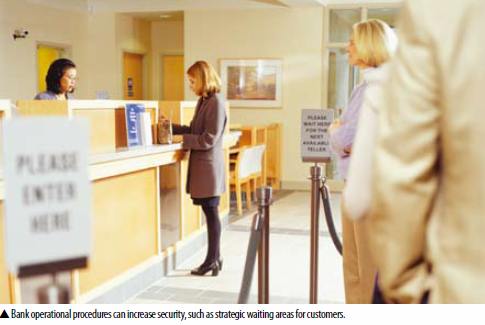 To carry out the system's best performance, some companies train and partner with integrators. “Due to the nature of our systems and since we are typically just one aspect of the solution, it is very common for us to work together with an integration partner to make sure the right solution is specified for each specific customer,” Kapadia said.
To carry out the system's best performance, some companies train and partner with integrators. “Due to the nature of our systems and since we are typically just one aspect of the solution, it is very common for us to work together with an integration partner to make sure the right solution is specified for each specific customer,” Kapadia said.
Customers can also choose the system installers they would like the solution provider to work with. “We usually discuss with the bank to decide on which installer that they would like us to work with, but most of the banks already have strong relationship with accredited installers,” Koh said. “We provide consultation and training for the installer once the bank had made their choice.”
Some vendors reach end users directly through education. “The leads usually come from the end user seminars that we organize,” Koh said.“Then we will assign to the distributor and partners to get in touch with the leads and convert them into actual projects.”
Solution providers also offer in-house installation services. “Having a strong relationship with banks can help to increase banks ' acceptance for integrated solutions,” Harir-Forouch said. “With Gunnebo as the developer, manufacturer, installer and maintenance provider, adoption of integrated safe solution is made easy. Since security is not the core business of banks, they rely on us to smooth out the integration process and make sure the solutions will be efficient and identical in all branches.”
Vendors can partner with IT providers to smooth the integration between security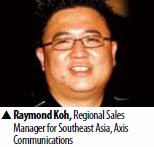 systems and other business operations. “RCG collaborates with major suppliers for banks, such as HP and IBM, to supply asset tracking in bank data centers.We also work with security system integrators in the Middle East,” said Kurniawan. “We design and implement systems for both newly opened banks and banks that want improved systems but with limitations of the existing systems.”
systems and other business operations. “RCG collaborates with major suppliers for banks, such as HP and IBM, to supply asset tracking in bank data centers.We also work with security system integrators in the Middle East,” said Kurniawan. “We design and implement systems for both newly opened banks and banks that want improved systems but with limitations of the existing systems.”
For example, the company's VIP identification system uses RFID to offer services for preferred clients, improving customer relationship management, Kurniawan said. This integrates security with daily operations.
Banks often bring in consultants to decide the most suitable solutions. “DFR Risk Management provides vendor-independent consultancy and training services specializing in managing the fraud and security risks associated with ATM and other self-service terminals,” said Russell.
Along with seeking out reputable consultants, some financial institute ions cons idertotal solution providers who offer a complete range of equipment and services to banks. “It is subjected to the bank's decision to either purchase solutions by product category or total solutions,” Koh said. “However, we see that in the emerging market, the local banks would usually work with the partners that can offer both access control and surveillance as a total solution. As for multinational corporate banks, they follow the corporate policy of using the same system across the board.”
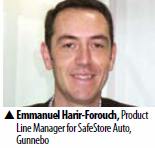 Well-known global integrators are likely to be chosen. “The multinational corporate banks would more likely to look for total solutions provided by well-known integrators such as Honeywell, Lenel and Tyco,” Koh said. “These companies are also strategic partners of Axis.Our surveillance cameras can thus be integrated with their systems. This is how we came to know of the market's opportunities.”
Well-known global integrators are likely to be chosen. “The multinational corporate banks would more likely to look for total solutions provided by well-known integrators such as Honeywell, Lenel and Tyco,” Koh said. “These companies are also strategic partners of Axis.Our surveillance cameras can thus be integrated with their systems. This is how we came to know of the market's opportunities.”
Security operation centers monitor all security devices and play a crucial role. Some banks do not allow third-party monitoring of their premises. “They prefer to use their own monitoring center,” Krzak said. “UTCFS will help banks build their own monitoring center by providing consulting, design and install equipment services.”
Future
Security technology at banks will continue to advance. “The market is heading toward higher image resolution, with better image clarity at an affordable price,” Lee said.
Energy conservation and environmental sustainability is important for financial institutions. “In parts of the world, such as Canada, we work with banks to help make them become more ‘green' and reduce their carbon footprint and save energy costs, particularly by integrating the security system with the lighting controls and HVAC systems,” Krzak said.
Advance technology minimizes risks. However, there is no perfect solution that can guarantee complete safety. Carefully planned operational procedures along with thorough background checks and constant security assessments should be practiced to strengthen security at banks.